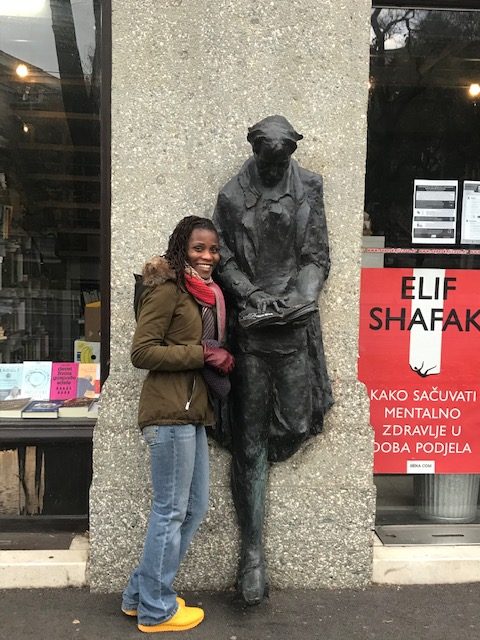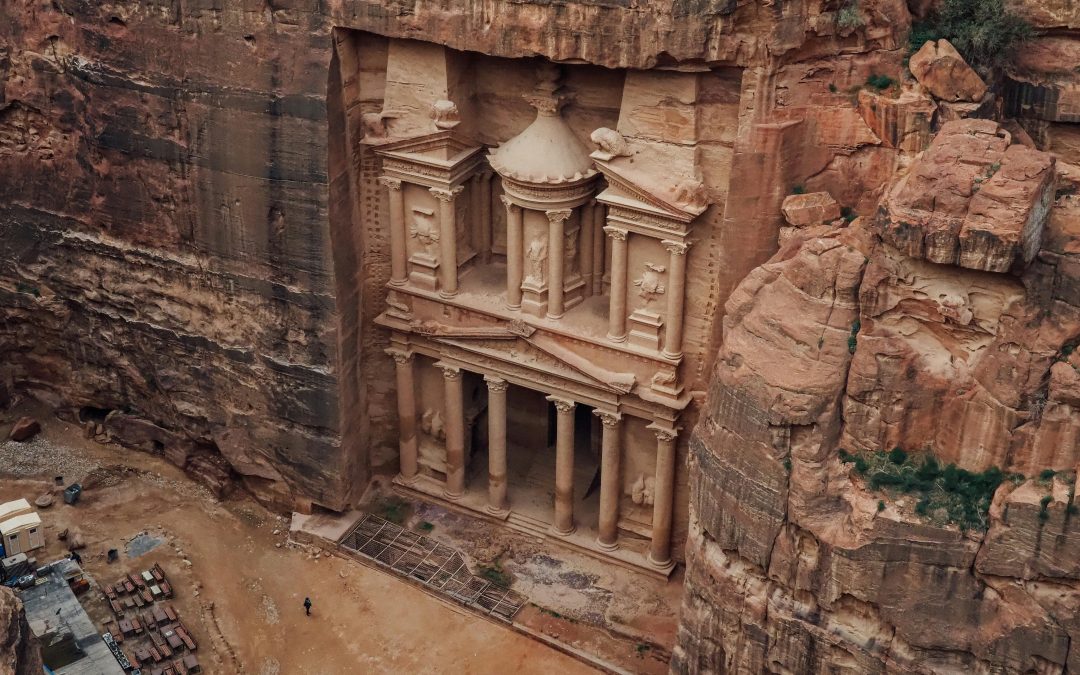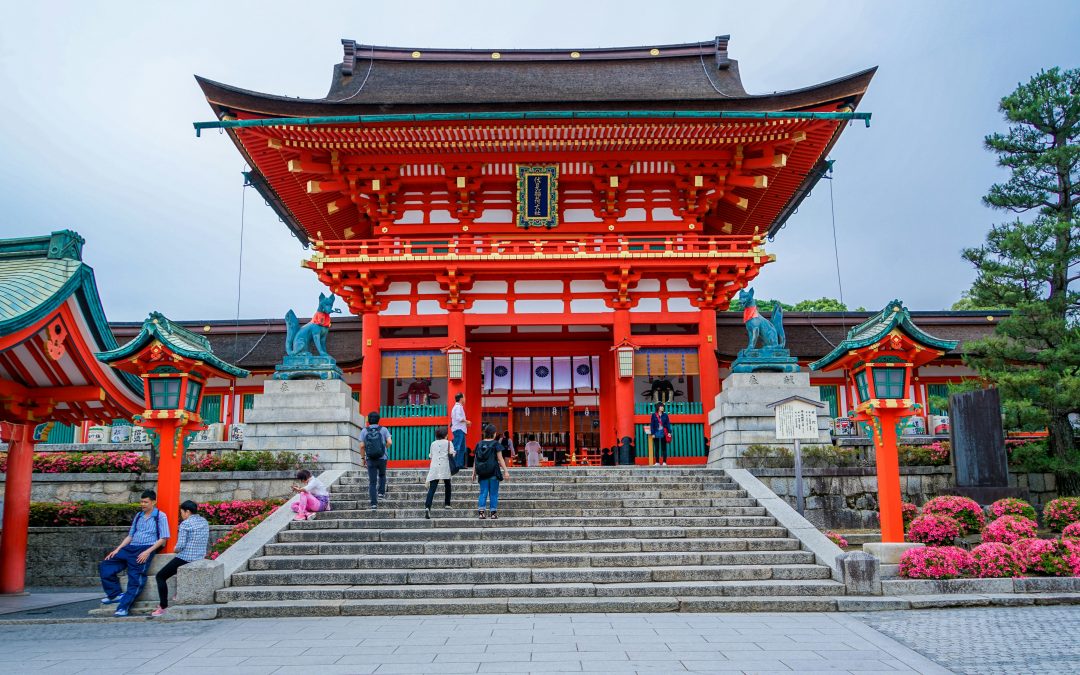
KYOTO
Kioto no es un parque temático; es una capital viva de la artesanía, la fe y la vida de barrio. En 2025, disfrutará de un viaje extraordinario si se adapta a las estaciones, se desplaza temprano o tarde y sigue las normas de etiqueta de la ciudad -especialmente en Gion- para que residentes, artesanos y viajeros puedan compartir las mismas calles con facilidad.
1) What’s different (and why it matters)
- Gion’s private alleys: After years of overcrowding and harassment of geiko/maiko, Gion’s neighborhood council began banning tourists from certain private lanes and enforcing fines up to ¥10,000 for trespass/unauthorized photography on private roads. Main public streets (e.g., Hanamikoji) remain open, but the alleys signed as private are off‑limits from April 2024 onward. Expect multilingual “no entry/no photo” signage; enforcement exists to stop “maiko paparazzi” behavior and protect residents at work. [straitstimes.com], [timeout.com], [soranews24.com]
- Citywide etiquette push: Kyoto’s official guides now emphasize “Mind Your Manners” and a Code of Behavior for sustainable tourism: don’t block lanes, no eating while walking in crowded heritage areas, respect “no photography” signs at shrines/temples, and no street smoking/littering (ordinance enforced). [kyoto.travel], [moral.kyokanko.or.jp], [livejapan.com]
- Accommodation tax (heads‑up for 2026): Your 2025 trip uses the current lodging tax bands (¥200/¥500/¥1,000 per person per night by room rate). From March 1, 2026, Kyoto will shift to five tiers up to ¥10,000 pppn for ultra‑luxury rooms (≥¥100,000), with intermediate tiers at ¥400, ¥1,000 and ¥4,000. Plan budgets accordingly if you’re booking far ahead. [asahi.com], [thepointsguy.com]
2) Seasons & timing — when Kyoto feels magical (not manic)
Cherry blossom (late Mar–early Apr): Sublime—and peak crowds. Book a year ahead; go dawn/late at hot spots. [lonelyplanet.com]
Summer (Jun–Aug): Festivals (e.g., Gion Matsuri) animate the city; humid but electric. Nights are lively; day heat favors shaded temple gardens. [lonelyplanet.com]
Autumn leaves (late Oct–early Dec): En sweet spot for weather and color. Forecasts in 2025 suggest mid‑Nov → early Dec peaks in Kyoto, with warm autumn possibly delaying a week; many sites offer night illuminations. [livejapan.com], [japanhighlights.com]
Winter (Dec–Feb): Quiet, crisp, and reflective; closures around New Year (Dec 29–Jan 3). [lonelyplanet.com]
Trip‑builder tip: In blossom and foliage seasons, stack your days with pre‑8am visits and post‑sunset illuminations; park mid‑day for museums, tea, or markets.
3) The Etiquette that unlocks Kyoto (especially in Gion)
- Gion isn’t a stage set. Do not enter private alleys marked with no‑entry signs; don’t block doorways or follow maiko/geiko. Photography is banned on private roads and harassment carries ¥10,000 fines. If you’re on a public street and someone is working with a client, no photos (seek cultural performances instead). [timeout.com], [afar.com]
- At shrines/temples: Look for “No photography” pictograms; many sanctuaries restrict images in sacred halls. Keep voices low; no eating/drinking in sacred precincts. [moral.kyokanko.or.jp]
- City code: Don’t obstruct narrow lanes, don’t eat while walking in crowded heritage streets, no street smoking, and manage your trash (bins are scarce—carry it out). [livejapan.com]
- City reminders (2025): The official guide reiterates: do not pursue/photograph children or residents without consent; be mindful in school zones and neighborhood lanes. [kyoto.travel]
For a one‑page refresher, download “Mind Your Manners” from the official site before you go. [kyoto.travel]
4) Four perfect days (crowd‑smart, culture‑first)
Day 1 — Higashiyama at Dawn, Kiyomizu by Night
- Dawn lanes (Ninenzaka/Sannenzaka): arrive before shops open for empty stone ways and blue‑hour photos.
- Kiyomizu-dera: The temple opens 06:00 daily; closing varies seasonally. In 2025, special night viewings run Mar 25–Apr 3, Aug 14–16, y Nov 22–Dec 7 (until 21:30, last entry 21:00). The night beam over the city is stunning—and crowd‑spread through long hours. [www.kiyomi…dera.or.jp], [kiyomizudera.or.jp]
- Kiyomizu basics: Standard admission is typically ¥500 adult/¥200 child; check onsite for updates, and expect daytime closures to shift for illumination set‑up. [kinabal.co.jp]
Etiquette note: Keep photo gear compact; tripods may be restricted, especially at night crowds. Watch posted rules. [www.kiyomi…dera.or.jp]
Day 2 — Fushimi Inari 24h + Uji tea
- Fushimi Inari‑taisha: Open 24/7—the stair loop to the summit is 2–3 hours. Peak crowds 09:00–18:00; go pre‑sunrise o post‑sunset for quiet tunnels of torii. Upper paths are dim at night—bring a headlamp and walk cautiously. [lonelyplanet.com]
- Timing reality: Even 06:00 can be busy in peak season; earlier is better (some advice suggests 05:00 starts). Evening descents at dusk can be atmospheric and safe if you stick to main trails. [swagachi.me], [japanlocal…rguide.com]
- Culture add‑on: Hop to Uji (Byōdō‑in Phoenix Hall; matcha tastings) for a half‑day. Evening: ramen or kaiseki back in Kyoto.
Day 3 — Arashiyama bamboo + riverside
- Arashiyama Bamboo Grove: The path is a public way and effectively open 24 hours (no lighting). Go 07:00–08:00 or late afternoon; stay on paths and don’t trample undergrowth or block the narrow lane for staged photos. [article.be…pes-jt.com], [characross…eworld.com]
- Tenryū‑ji → Okochi Sanso → Togetsukyō Bridge: Fold in garden time and the scenic riverbank. (Toilets and facilities are near the grove entrances; the path itself has few benches.) [characross…eworld.com]
- Opcional: Sagano Scenic Railway (seasonal), then boat or café by the Katsura River.
Day 4 — Nijo Castle + Nishiki Market + an evening performance
- Nijō‑jō: Plan for the castle and gardens mid‑morning (check current hours).
- Mercado Nishiki: Sample precisely—note the “no eating while walking” etiquette in crowded sections; use stall areas or designated spaces. [livejapan.com]
- Respectful performance: Instead of chasing maiko in alleys, book a licensed cultural show/tea ceremony or seasonal dance (odori)—the official Kyoto site lists events and Visitor Host tours. [kyoto.travel]
5) Kyoto at night — the legal (and luminous) ways to enjoy it
- Temple illuminations: Beyond Kiyomizu‑dera’s published spring/summer/autumn nights, watch the city’s event pages for other autumn light‑ups (Eikan‑dō, Kōdaiji, etc.) that typically run mid‑Nov → early Dec with timed entry. [kyoto.travel]
- Fushimi Inari after dusk: Allowed (site is open 24h), but it’s a mountain: bring a light, mind footing, and stay to the main loop. [lonelyplanet.com]
- Gion nights: Public streets only; no private alleys. If you want a photo, buy a ticketed experience—don’t interrupt someone’s work. [straitstimes.com]
6) Getting around — IC cards, passes, and what actually saves you time
- IC cards: Suica (Tokyo’s) and ICOCA (Kansai’s) are interoperable nationwide. In 2025, Suica sales returned to normal after prior chip shortages; you can tap Suica widely across Kyoto subways, JR and many buses/shops—though a few rural lines still require paper tickets. [japan-guide.com], [umamibites.com]
- Kansai passes (for region‑hopping): JR West Kansai Area Pass (1–4 days) gives unlimited JR rides in Osaka–Kyoto–Nara–Kobe and includes the Haruka airport express (book reserved seats in advance). Not valid on Shinkansen; you’ll still use subways/private rail for many city hops. Check official pricing (¥2,800–¥7,000 adult depending on days). [westjr.co.jp]
- Which to choose?
- Staying mostly in Kyoto: a Kyoto Subway & Bus day pass (from local operators) can be handy; otherwise, IC pay‑as‑you‑go is simplest. (Kyoto’s bus network can be crowded; favor rail where possible.) [japantrave…vitime.com]
- Doing Osaka, Nara, Himeji day trips: a Kansai Area Pass can pay off quickly vs. point‑to‑point fares. [en.japantravel.com]
7) Where to stay — neighborhoods with a purpose
- Southern Higashiyama: Walkable to Kiyomizu‑dera and preserved lanes; book early in peak seasons. [lonelyplanet.com]
- Downtown/Shijō–Kawaramachi: Transit and dining hub; easy access everywhere. [lonelyplanet.com]
- Arashiyama: Nature and river views; plan 1+ night for quiet dawn bamboo walks.
- Ryokan nights: Consider at least one ryokan stay (tatami + kaiseki) to immerse in Kyoto style. [lonelyplanet.com]
Budget note: For stays in 2026+, El accommodation tax increases sharply at luxury tiers (up to ¥10,000 pppn). 2025 trips keep current lower rates. [thepointsguy.com]
8) Site‑specific smarts (the stuff that keeps trips smooth)
Fushimi Inari
- 24 hours; shops and shrine counters keep daytime hours (amulets/fortunes typically 07:00–18:00). The full loop is 2–3 hours; many visitors only do the lower Senbon Torii and turn back—continue upward for space. [japanlocal…rguide.com]
Kiyomizu-dera
- Opens 06:00; closing varies; 2025 night viewings listed above. Arrive pre‑8:30 in high season; return at night instead of braving midday. [www.kiyomi…dera.or.jp], [kiyomizudera.or.jp]
Arashiyama Bamboo Grove
- Open 24/7 (public road); no lighting; go early/late; be considerate—don’t step into the bamboo for posed shots, don’t block the narrow path. Facilities are outside the grove. [article.be…pes-jt.com], [characross…eworld.com]
Gion
- Stay on public streets; no private alleys signed with bans; no unsolicited geisha photos, and never touch garments—multiple incidents led to the rule‑tightening. [straitstimes.com]
9) Autumn 2025 — your foliage playbook
- When: Typical late Nov → early Dec; some 2025 forecasters expect slightly later peaks if warmth persists. Plan flexible days. [japanhighlights.com], [livejapan.com]
- How: Combine one dawn, one night illumination, y one suburban pocket (e.g., Uji, Kibune) to hedge timing. [japanhighlights.com]
- Where (classic picks): Kiyomizu-dera stage views; Eikan‑dō’s famed night light‑up; Arashiyama hillsides by river; Tōfuku-ji bridges (capacity managed). (Confirm each site’s 2025 light‑up calendars on the official Kyoto events pages.) [kyoto.travel]
10) Respect‑first photography & culture
- Ask consent for close portraits; be mindful of portrait rights and privacy in Japan’s culture. Avoid photographing children or school groups; some schools post signs requesting no photos. [japantravelpros.com]
- Read the room in teahouses/performances: many venues prohibit photos; enjoy the moment and buy official images instead. [moral.kyokanko.or.jp]
- Gion rule of thumb: If a maiko es with clients, no photography; book a licensed performance/tea to engage respectfully. [afar.com]
11) Money, tickets & lines — small choices, big gains
- Temple tickets are generally cash or simple POS; carry small bills.
- IC cards speed transport buys and many convenience‑store payments. Suica works in the ICOCA area (Kansai), but very rural lines can still be cash/paper only. [umamibites.com], [getaroundjapan.jp]
- Crowd math: Shift photo‑icon sites to dawn (Higashiyama, Fushimi), and put markets/museums en mid‑day. Kyoto’s own advisory pages flag busy seasons and tips each autumn—worth a check before you head out. [kyoto.travel]
12) Five ethical‑travel micro‑itineraries (steal these)
- Dawn Kodaiji → Maruyama Park → Yasaka Shrine (breakfast near Shijō). Keep temple courtesies; check each site’s photo rules. [moral.kyokanko.or.jp]
- El camino del filósofo loop before 09:00 → Eikan‑dō foliage (night light‑up day‑of). [kyoto.travel]
- Uji tea day: Byōdō‑in + matcha brewing class → riverside stroll at sunset.
- Northern temples: Daitoku‑ji sub‑temples or Kinkaku-ji early, then Nijō‑jō garden.
- Arashiyama low‑impact: Bamboo at dawn → Tenryū‑ji garden → riverside bento (use bins; no littering). [livejapan.com]
13) FAQs
Are tourists “banned” from Gion?
No. Public streets remain open, but private alleys in parts of Gion prohibit entry y photography, with fines up to ¥10,000 for violations, introduced to prevent harassment of geiko/maiko and residents. Follow posted signs and choose licensed cultural shows instead. [straitstimes.com], [timeout.com]
Is Fushimi Inari really open 24 hours?
Yes. The shrine complex is open 24/7; the full loop to the summit takes 2–3 hours. Go pre‑sunrise o after dusk to avoid crowds; bring a light at night, as upper paths aren’t fully lit. [lonelyplanet.com], [japanlocal…rguide.com]
When does Kiyomizu‑dera open, and are there night visits in 2025?
It opens at 06:00 year‑round; closing times vary. Special night viewing para 2025 runs Mar 25–Apr 3, Aug 14–16, y Nov 22–Dec 7 (to 21:30; last entry 21:00). [www.kiyomi…dera.or.jp], [kiyomizudera.or.jp]
Best time for autumn leaves in Kyoto this year?
Typically mid‑Nov → early Dec. 2025 outlooks suggest normal to slightly later peaks if warmth continues; check forecasts before you fly, and hedge with a night light‑up. [livejapan.com], [japanhighlights.com]
Does Suica work in Kyoto?
Yes—IC interoperability means Suica taps through most Kyoto transport and shops; ICOCA is the local equivalent. Some rural lines remain cash/paper. [japan-guide.com], [umamibites.com]
What’s happening to Kyoto’s hotel tax?
En current per‑person nightly tax (¥200/¥500/¥1,000 by room rate) applies in 2025. From March 1, 2026, a five‑tier system tops out at ¥10,000 for rooms ≥¥100,000; mid‑tiers become ¥400/¥1,000/¥4,000. [thepointsguy.com]
14) Responsible‑travel checklist
- Public vs private: Obey no‑entry y no‑photo signs—especially in Gion’s private alleys. [straitstimes.com]
- Shrines/temples: Quiet voices, modest dress, follow posted photo bans, no food inside precincts. [moral.kyokanko.or.jp]
- Streets: Don’t block narrow lanes, don’t eat while walking in crowded heritage areas, no street smoking. [livejapan.com]
- Leave no trace: Carry trash until you find bins; Kyoto minimizes public cans in old quarters. [livejapan.com]
- Choose ticketed culture: See maiko/geiko en licensed shows, not by following workers. [kyoto.travel]

Escrito por Kariss
Más de esta categoría

PETRA
Aunque haya visto mil fotos, la primera vez que el Siq le libera en el resplandor rosado del Tesoro es un shock. Petra no es sólo una fachada; es una ciudad de 60 kilómetros cuadrados de montañas, ramblas y espacios rituales que recompensa a quien esté dispuesto a caminar un poco más y a planificarse de forma más inteligente. En 2025, eso significa conocer el sistema de venta de entradas (y el Jordan Pass), cronometrar el paso por el Siq, utilizar los senderos menos conocidos y viajar honrando a las comunidades beduinas que aún administran este lugar.

PETRA
Aunque haya visto mil fotos, la primera vez que el Siq le libera en el resplandor rosado del Tesoro es un shock. Petra no es sólo una fachada; es una ciudad de 60 kilómetros cuadrados de montañas, ramblas y espacios rituales que recompensa a quien esté dispuesto a caminar un poco más y a planificarse de forma más inteligente. En 2025, eso significa conocer el sistema de venta de entradas (y el Jordan Pass), cronometrar el paso por el Siq, utilizar los senderos menos conocidos y viajar honrando a las comunidades beduinas que aún administran este lugar.

PETRA
Aunque haya visto mil fotos, la primera vez que el Siq le libera en el resplandor rosado del Tesoro es un shock. Petra no es sólo una fachada; es una ciudad de 60 kilómetros cuadrados de montañas, ramblas y espacios rituales que recompensa a quien esté dispuesto a caminar un poco más y a planificarse de forma más inteligente. En 2025, eso significa conocer el sistema de venta de entradas (y el Jordan Pass), cronometrar el paso por el Siq, utilizar los senderos menos conocidos y viajar honrando a las comunidades beduinas que aún administran este lugar.
0 Comentarios
Nuestro boletín


0 comentarios